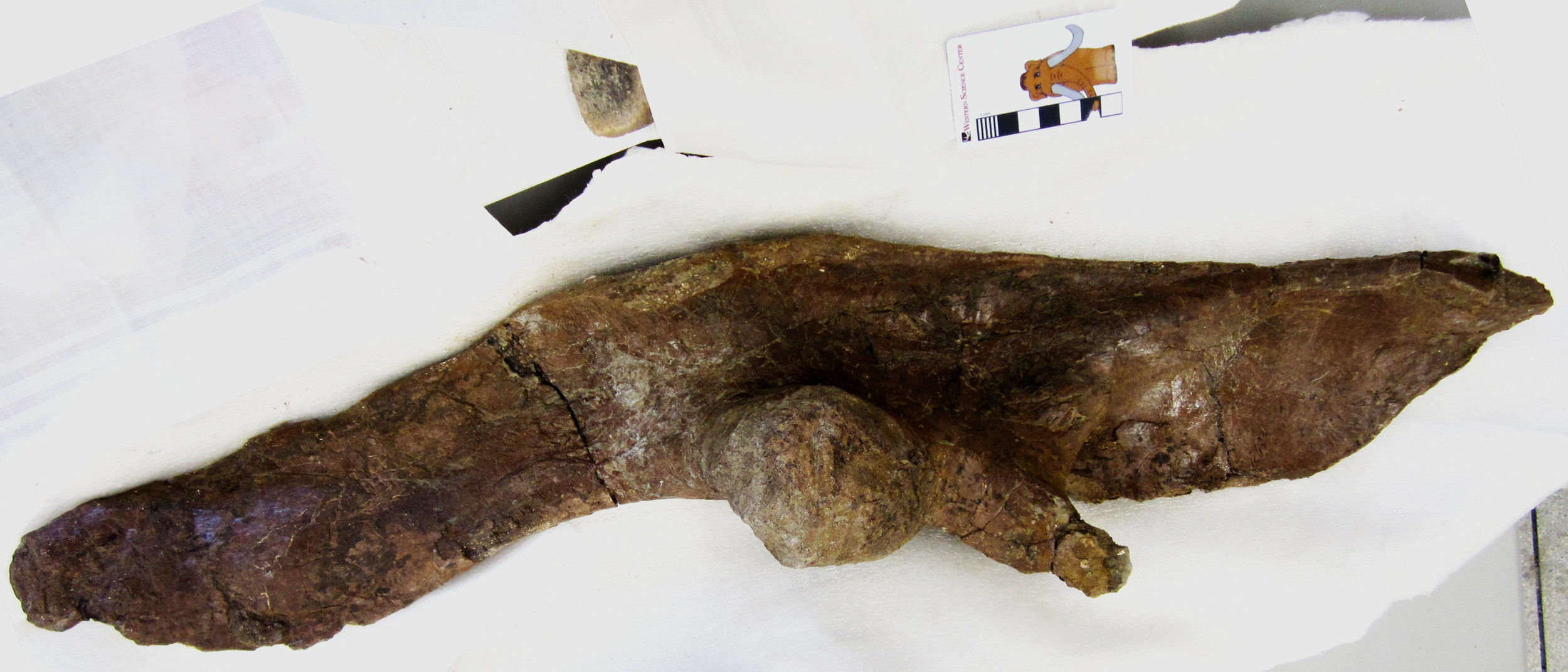 On May 17, I posted a photo of the ilium of a ceratopsid dinosaur that we collected in the Upper Cretaceous Menefee Formation of New Mexico. At the time, only the medial surface of the bone was visible; however, WSC volunteer Joe Reavis has been working hard and has now prepped the lateral surface as well. On May 17, I identified the bone as a left ilium, but now that I can see the whole thing, I can say that it's actually a right ilium.This beautifully-preserved ilium is part of an incomplete skeleton that also includes vertebrae and ribs from the torso, as well as the sacrum, the series of fused vertebrae to which this ilium would have attached. Ceratopsids, the great horned dinosaurs such as Triceratops, were very abundant and diverse in western North America during the Late Cretaceous; our specimen is around 79 million years old, and we can't yet determine what species it represents. This skeleton was collected in 2016-2018 by staff and volunteers from the Western Science Center, Zuni Dinosaur Institute for Geosciences, and Southwest Paleontological Society.Post by Curator Dr. Andrew McDonald
On May 17, I posted a photo of the ilium of a ceratopsid dinosaur that we collected in the Upper Cretaceous Menefee Formation of New Mexico. At the time, only the medial surface of the bone was visible; however, WSC volunteer Joe Reavis has been working hard and has now prepped the lateral surface as well. On May 17, I identified the bone as a left ilium, but now that I can see the whole thing, I can say that it's actually a right ilium.This beautifully-preserved ilium is part of an incomplete skeleton that also includes vertebrae and ribs from the torso, as well as the sacrum, the series of fused vertebrae to which this ilium would have attached. Ceratopsids, the great horned dinosaurs such as Triceratops, were very abundant and diverse in western North America during the Late Cretaceous; our specimen is around 79 million years old, and we can't yet determine what species it represents. This skeleton was collected in 2016-2018 by staff and volunteers from the Western Science Center, Zuni Dinosaur Institute for Geosciences, and Southwest Paleontological Society.Post by Curator Dr. Andrew McDonald
